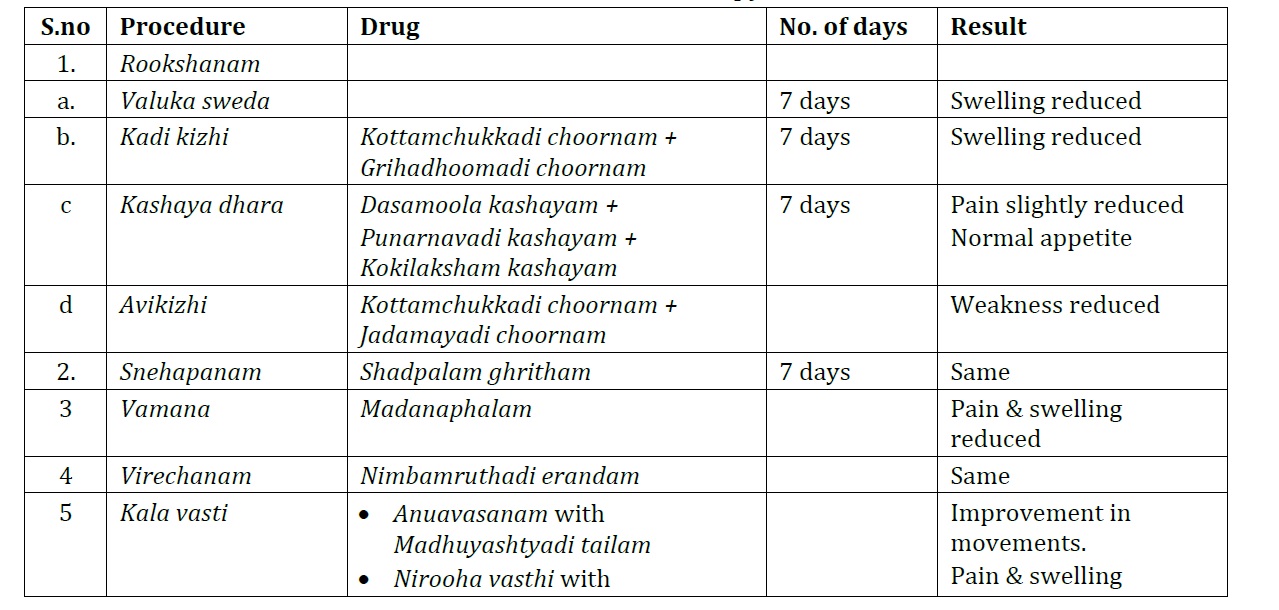Panchakarma Therapy in the Management of Systemic Lupous Erythematosus - A Case Report
Abstract
SLE is an autoimmune disorder which can affect the joints, skin, kidney, blood cells, brain, heart and lungs. In this disease the immune system attacks its own tissues and produces various symptoms like fatigue, joint pain, rash, fever etc. Symptoms may vary in persons and can periodically get worse and then improve.
Treatment of SLE mainly focuses on controlling the symptoms and therapy improving the quality of life as there is no complete cure. Medications such as anti-inflammatory and steroids can be given. In Ayurveda, the symptoms of SLE are more similar to the Lakshanas of Gambheera vatarakta. Samana oushadhies along with Panchakarma procedures is very effective in the management of SLE. Successful functional management of SLE with proper Samana oushadhies and Panchakarma procedures are discussed in this paper.
19 year old male patient with anti ds DNA positive is treated with Samana oushadhies and given for 90 days Panchakarma therapy including Vamana, Virechana, Nasya, Nirooha vasthi and Anuvasana vasthi. The treatment protocol found effective in controlling the progressive symptoms and improving the functional ability of the patient. There is no complication or side effects recorded during the entire treatment period.
Downloads

Copyright (c) 2022 International Journal of Ayurveda and Pharma Research

This work is licensed under a Creative Commons Attribution-NonCommercial-ShareAlike 4.0 International License.






